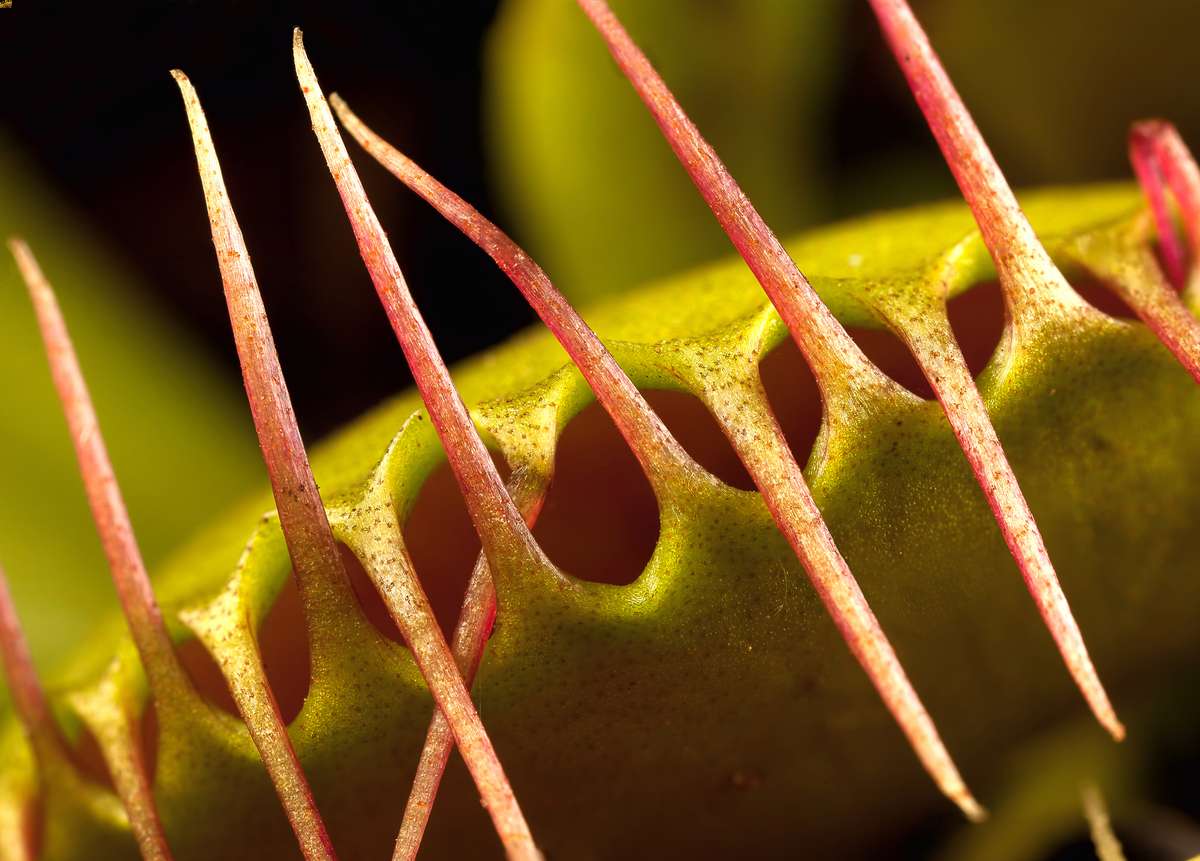Welcome to the wild world of Venus flytraps – the fierce little plants with a taste for insects! With its trademark mouth and teeth, the Venus flytrap is anything but an ordinary plant, blending elegance with an appetite for bugs in a way that’s equal parts captivating and creepy. Read on for 10 amazing facts about Venus flytraps!
Native to the wetlands of the Carolinas, these awesome plants have evolved some incredible adaptations that make them one of nature’s coolest carnivores. They snap, digest, and even get rid of leftovers!
These amazing, snap-happy plants have their own quirks and tricks up their leaves. From their clever prey-detection skills to their speedy trap reflexes, the Venus flytrap is here to challenge everything you thought you knew about plants.
Ready to dive into some jaw-dropping, interesting facts about Venus flytraps? Let’s go!
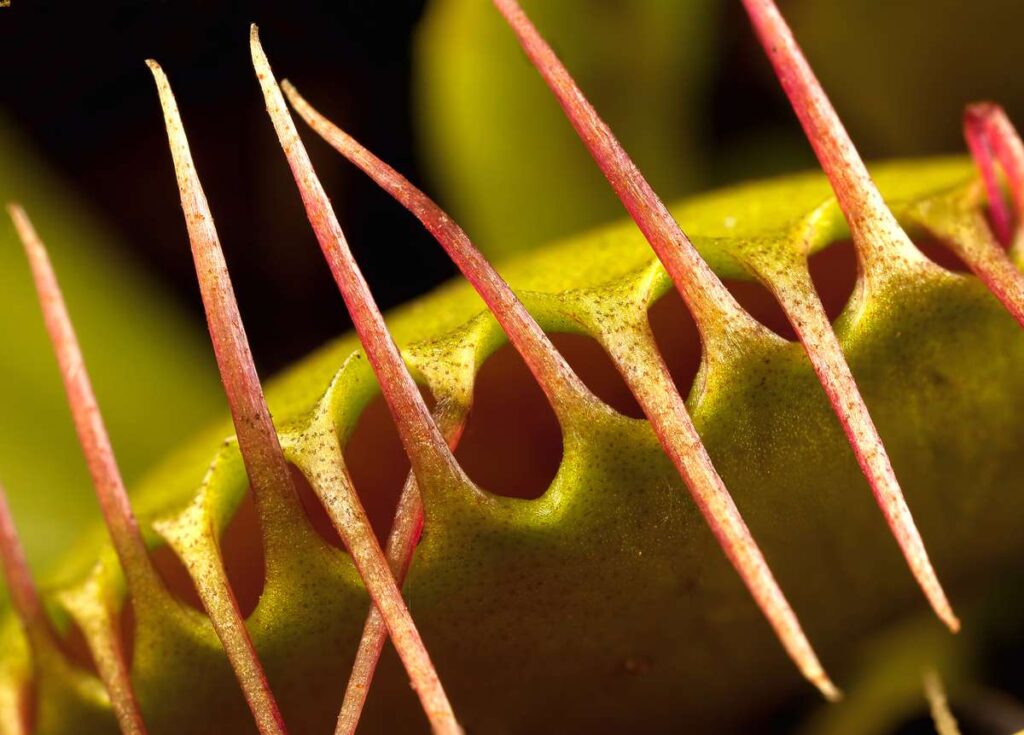
This post contains compensated links.
1. Venus Flytraps Eat Bugs
Venus flytraps are like tiny green monsters that love to eat bugs! Here’s how it works: a little fly or ant lands on the plant, thinking it’s found a safe spot to rest.
But surprise! The Venus flytrap has tiny hairs inside its “mouth,” and when a bug touches two of these hairs – SNAP! The trap shuts tight like a secret door! Now the bug is stuck, and the Venus flytrap gets to work, making special juices that break down the bug just like our stomachs do with food.
Over a few days, the Venus flytrap plant slurps up all the nutrients it needs to grow strong, and when it’s done, the trap pops open again, leaving behind a little bug shell as a reminder. Then it’s ready to catch its next meal!
Venus flytraps might be small, but they’re mighty bug-eaters!
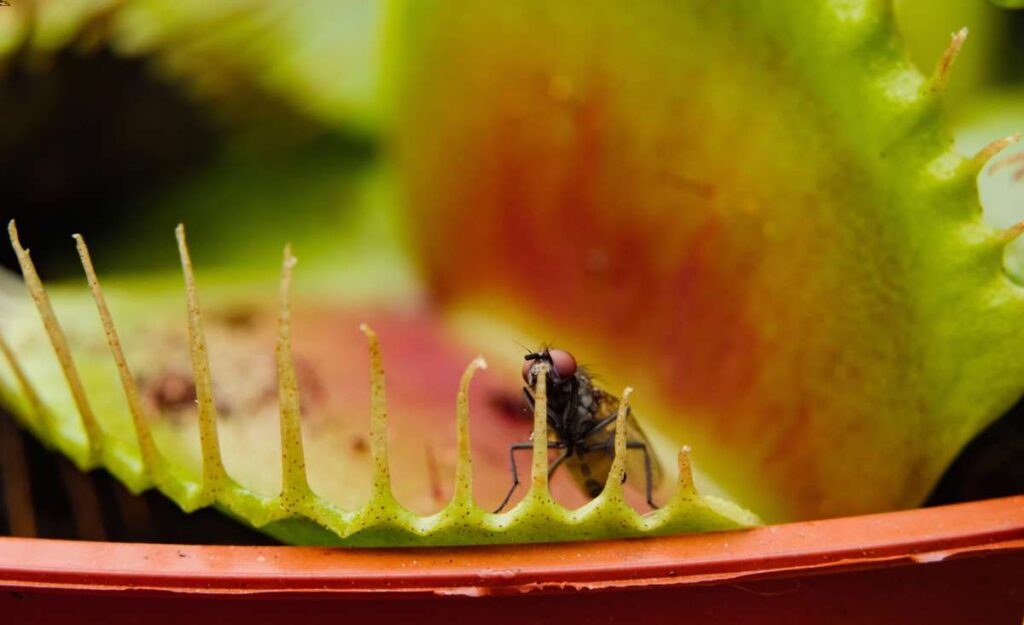
Read More
Wanna watch Venus flytraps eat bugs? Check out my favorite videos of Venus flytraps catching bugs.

Venus Fly Trap Mugs
Don’t miss this set of fun Venus Fly Trap mugs! Guaranteed to give you a chuckle with your morning coffee!
See on Etsy2. Venus Flytraps Can Detect ‘Real’ Food
Venus flytraps have a secret weapon: tiny trigger hairs in their mouths that work like little alarm buttons! When a bug lands on the inside of the flytrap, it might think it’s found a cozy resting spot, but those hairs are ready to catch it by surprise!

Here’s how it works:
If the bug touches just one hair, nothing happens. But if it touches two hairs quickly, BAM! The trap snaps shut like a surprise door, catching the bug inside.
Why two hairs? This smart trick keeps the flytrap from snapping closed for things like raindrops or dirt. Once the bug is caught inside the trap, the plant starts making special juices to digest it. It’s almost like the Venus flytrap is cooking its food!
Those tiny hair triggers might look small, but they’re super powerful for a plant that wants a big bug meal. The Venus flytrap’s “hairy” secret helps it become the ultimate bug catcher!
3. Venus Flytraps Have Beautiful Flowers
Many people wonder if Venus flytraps have flowers. The answer is yes, a Venus flytrap does have flowers – beautiful ones too!
While the little plant is famous for its bug-eating traps, in spring, Venus flytraps send up a long stem with delicate white flowers on top. These flowers bloom high above the traps, almost like they’re keeping a lookout for bugs from way up in the sky!
But here’s the clever part: the Venus flytrap grows its flowers far away from its traps so the bugs that help pollinate it, like bees and flies, don’t accidentally become lunch! This way, the flowers can invite helpful bugs to carry pollen from one plant to another, helping Venus flytraps make more baby flytraps without mixing up friends with food.
The Venus flytrap flowers are small but super important, keeping the plant’s ecosystem running smoothly. So while the traps are busy catching dinner, the flowers are working hard to help the Venus flytrap family grow!
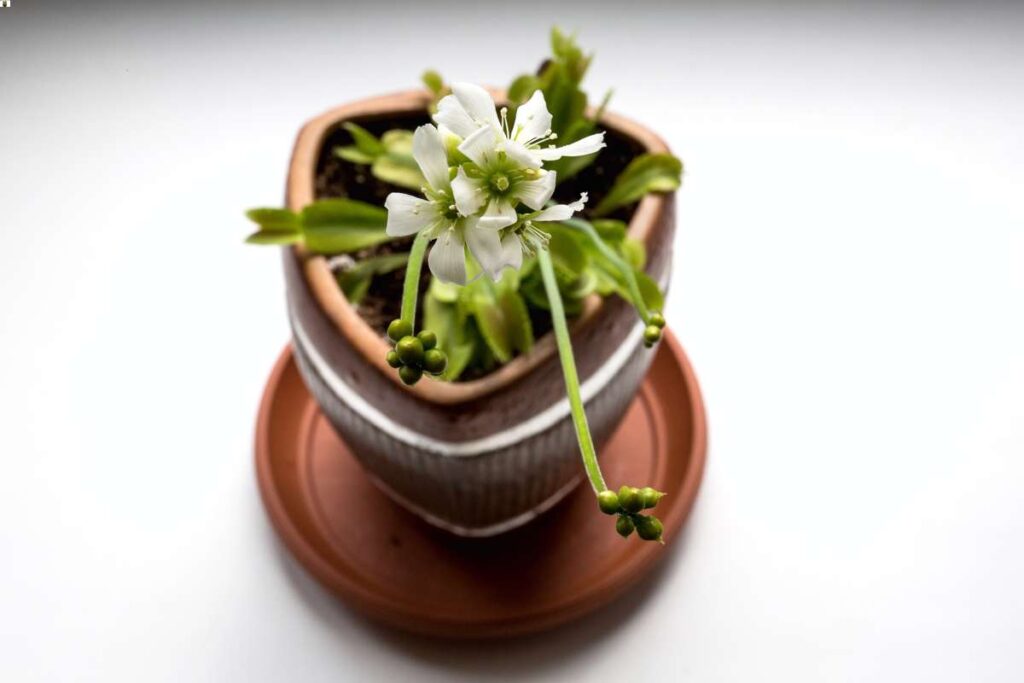
Read More
Discover the coolest Venus flytraps book for kids! Dive into fun facts, wild bug-catching tricks, and all the secrets of this amazing plant. Perfect for curious young explorers!
4. Venus Flytraps Can Grow to Adults!
Venus flytraps can live for a really long time – sometimes 20 years or more! Imagine having a plant that could stay with you from kindergarten all the way to college!
These little bug-chompers are super tough and smart, too. Each winter, they take a “nap” (called dormancy) to rest up for the next bug-catching season. During this nap, the plant’s traps get smaller or even fall off, and it looks kinda dead.
But don’t worry – it’s just saving energy, like recharging its “batteries.” When spring comes, it wakes up, grows fresh traps, and is ready to start catching bugs again! Over time, Venus flytraps can even make tiny “baby” flytraps, so it’s like having a whole family of hungry plants.
With a little care, a Venus flytrap can be your bug-munching buddy for years and years!

Read More
Are you curious about what a Venus flytrap eats? Check out my post on what kind of bugs does a Venus flytrap eat.
5. Venus Flytraps Drown their Prey
When a bug lands inside a Venus flytrap’s mouth, it’s in for a big surprise – and a very soggy one! Once the trap snaps shut, the Venus flytrap reveals its secret: it starts to make a special liquid that fills up the trap, almost like a tiny swimming pool!
This “bug soup” is actually digestive juice, which the flytrap plant uses to break down its prey. The bug is soon completely surrounded, almost like it’s underwater! The juices help the plant soak up all the good stuff it needs to grow strong, kind of like how we get vitamins from our food.
The Venus flytrap drinks up all the bug nutrients, leaving just an empty bug shell behind. Once it’s finished its “bug smoothie,” the trap opens up again, ready for its next victim!
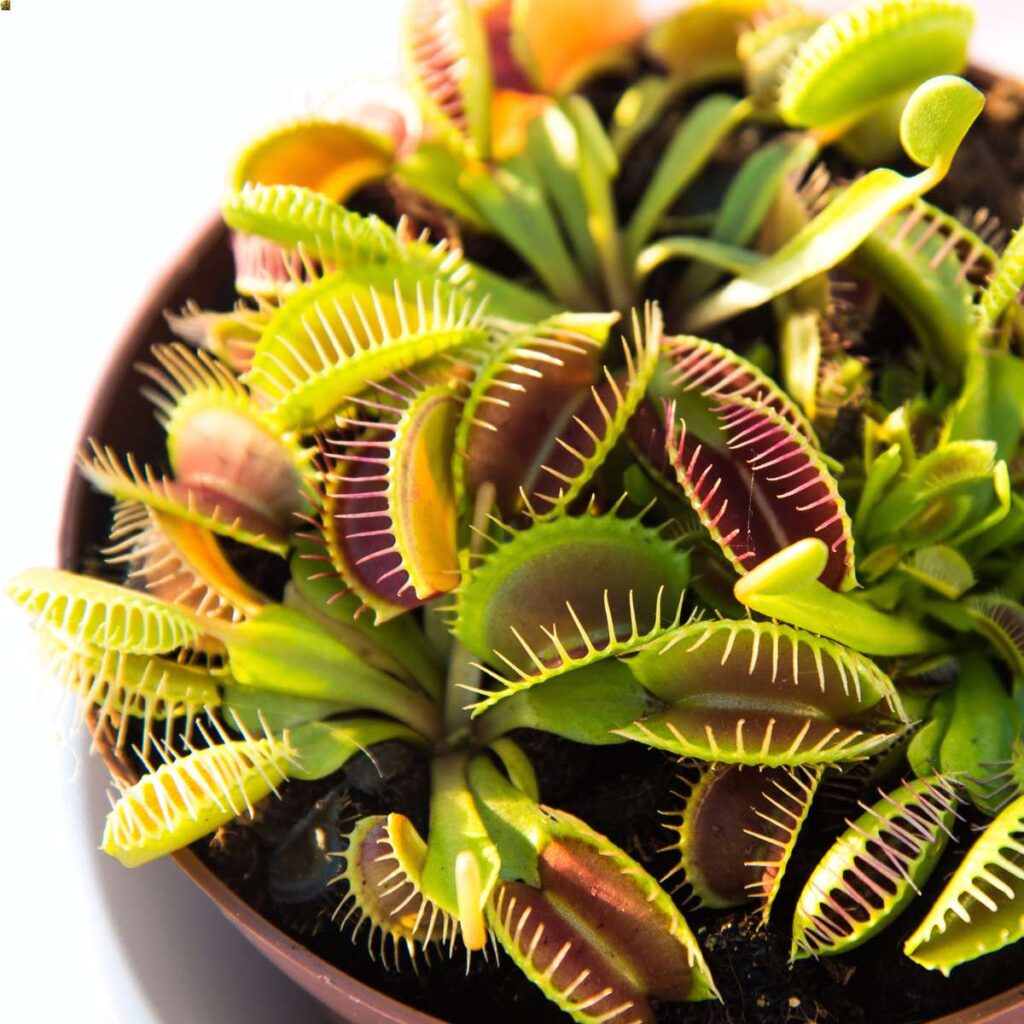
6. Venus Flytraps Have a Long Digestion Period
When a Venus flytrap catches a bug in its trap, the meal isn’t over in a few bites – it’s just beginning! After the trap fills with “bug soup”, it can take 5 to 12 days to finish one bug meal!
The time depends on how big the bug is and how hungry the flytrap feels. While the plant “eats,” the trap stays tightly closed, turning the bug into goo and soaking up all the nutrients it needs to grow strong.
Once the Venus flytrap is done, it opens back up, leaving behind a crunchy bug shell like a spooky souvenir. Then it’s ready to reset for the next unlucky bug to wander inside! With each slow, careful meal, the Venus flytrap powers up to catch even more!
Read More
Ready to meet the wildest bug-eating plants out there? Check out these awesome types of carnivorous plants and discover who’s snapping, trapping, and slurping up insects in the plant world!
7. Venus Flytraps Don’t Need To Eat Bugs
Did you know Venus flytraps don’t actually need to eat bugs to survive? Yep! These bug-munching plants can live perfectly fine without their insect snacks. They get most of their power from sunlight, water, and nutrients in the soil, just like other ‘normal’ plants!
But here’s the twist: Venus flytraps live in places where the soil is super low on nutrients, so they “snack” on bugs to get a little extra boost. It’s like having a favorite dessert – fun and tasty but not actually necessary.
So if a Venus flytrap doesn’t catch a bug for a while, it’s totally okay! It’ll keep growing and photosynthesizing, turning sunlight into energy, just like a regular plant. The bugs are just bonus treats!
So, even though they’re famous for their snap-traps, Venus flytraps can live a happy plant life with or without their bug meals.
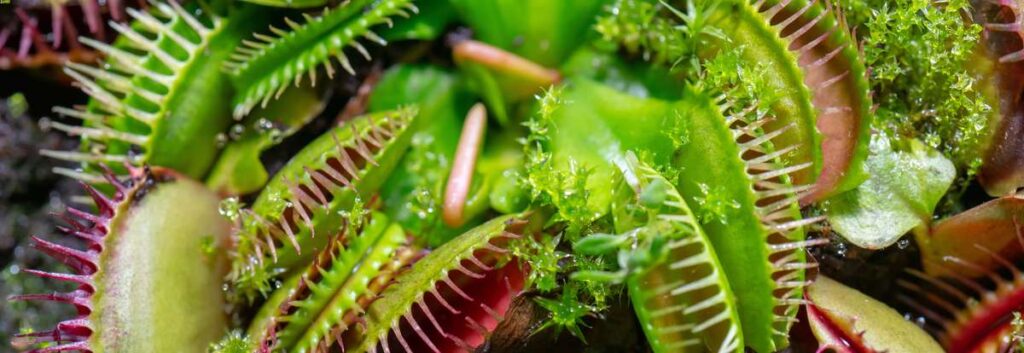
8. Venus Flytraps Are Harmless To Humans And Pets
Venus flytraps might look like fierce little monsters with their snap-traps, but guess what? They’re totally harmless to humans and pets! Even though they love munching on bugs, they’re way too small to hurt anything bigger.
If you ever put your finger in a Venus flytrap’s “mouth,” it might gently close, but don’t worry – it’s just giving you a plant “high-five!” It doesn’t have teeth or any way to chew, so it won’t hurt at all.
Venus flytraps are designed to trap tiny creatures like flies and spiders, not big fingers or paws. Your dog, cat, or even your little brother is totally safe around these bug-eating plants. So, go ahead and admire this amazing plant up close – it’s only dangerous if you’re a bug!

Venus flytraps are technically considered edible. That’s why they make such great houseplants: they’re 100 percent safe if your dog or little brother takes a bite.
9. Venus Flytraps Are Named After a Goddess
Did you know the Venus flytrap is named after a goddess? That’s right – these bug-munching plants are named after Venus, the Roman goddess of love and beauty!
Now, you might wonder what a bug-eating plant has to do with love, but here’s the cool part: the Venus flytrap was named for its beauty and charm, just like the goddess. With its bright green “leaves” and red, open “mouths,” the plant looks like it’s giving a fancy, flashy smile to lure bugs right in.
People were so amazed by its looks and clever trapping trick that they named it after the goddess herself! Even though it’s fierce to insects, the Venus flytrap has a beautiful and fascinating design that made people think of the graceful Venus.
So, next time you see a Venus flytrap, remember – you’re looking at a plant with a name fit for a goddess!

10. Venus Flytraps Are From The United States!
Guess what? Venus flytraps are true American natives! These cool plants come from the United States, and you won’t find them growing naturally anywhere else in the world.
Venus flytraps live in just one special area along the East Coast in North and South Carolina. These states have the perfect mix of sunny days and damp, sandy soil that Venus flytraps love. It’s like their own private bug buffet!
In the wild, Venus flytraps hang out in swampy areas, catching insects under the hot Carolina sun. Even though people grow Venus flytraps in other places now, their wild relatives are still thriving right here in the U.S.A.
In fact, it was on a family trip to Wilmington, North Carolina that we learned about Venus flytraps. We thought they were so cool, that we created this website!
So, if you’re ever in Carolina, keep an eye out – you might just spot these little green hunters in action! Who knew that one of the world’s coolest, bug-eating plants calls the United States home? Go, Venus flytraps – America’s amazing little bug chompers!
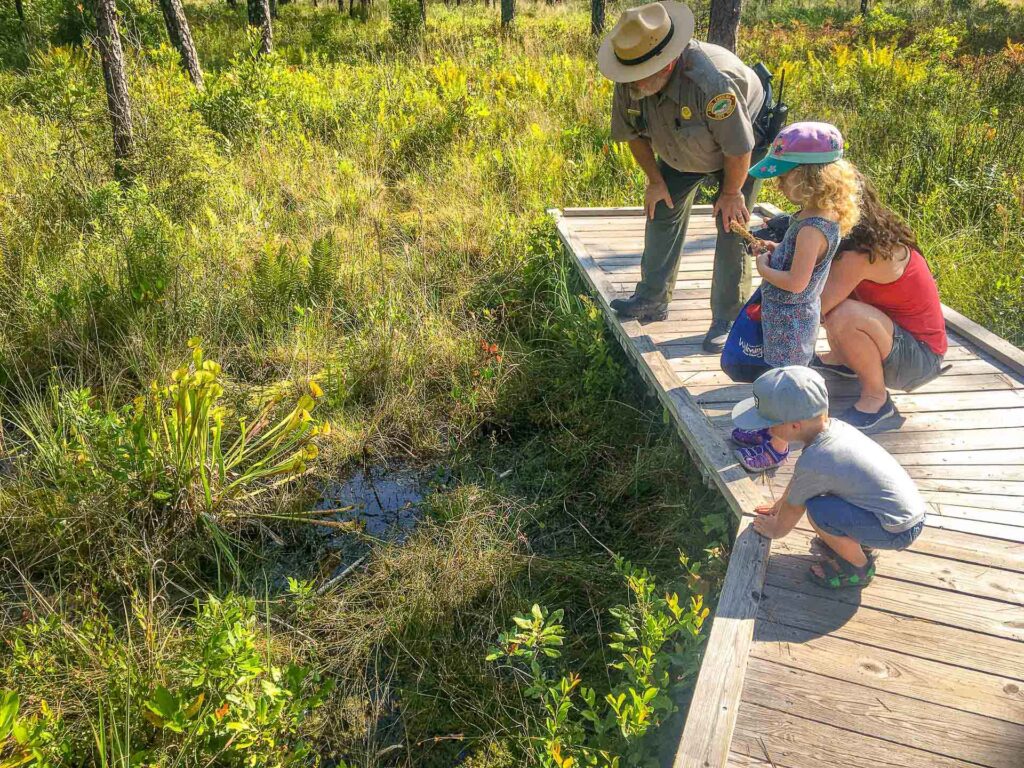
Read More
Want to learn more about seeing Venus flytraps in the wild? We have a website all about family travel and we have a post about visiting Wilmington with kids.
A Not Fun Fact: Venus Flytraps are an Endangered Species
Did you know that Venus flytraps are endangered in the United States? Even though they’re famous for their cool, bug-eating tricks, these plants need special conditions to survive.
They only grow naturally in small areas in North and South Carolina, where the soil is sandy, wet, and perfect for them. But as more people build houses and roads, the Venus flytrap’s natural habitat is disappearing.
Plus, some people try to take them from the wild, which makes it even harder for them to grow. Without their home, they can’t get the sunlight and soil they need to stay strong and healthy.
Luckily, scientists and conservationists are working hard to protect these amazing plants by making laws and preserving their habitats. By learning about and caring for endangered plants like the Venus flytrap, we can all help make sure they stay around for a long time, catching bugs and amazing us!
We hope these 10 fun & interesting facts about Venus flytraps help give you a new appreciation for the wonders of this famous carnivorous plant!
Read More
Did you know that Lego makes Venus flytrap sets? I own two of them and share all the details in my review of the Lego Venus flytrap sets.


